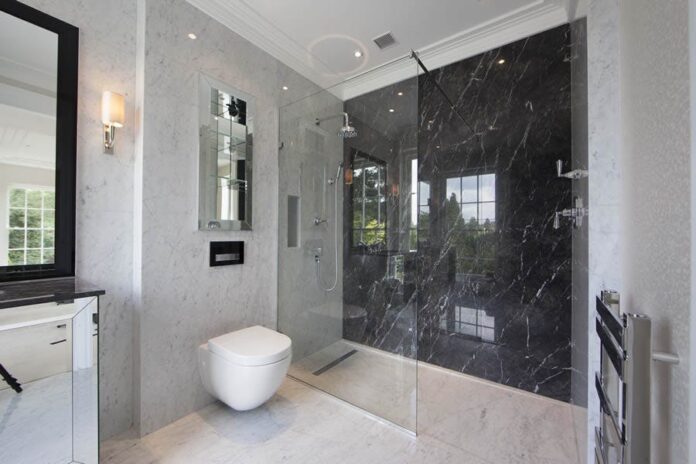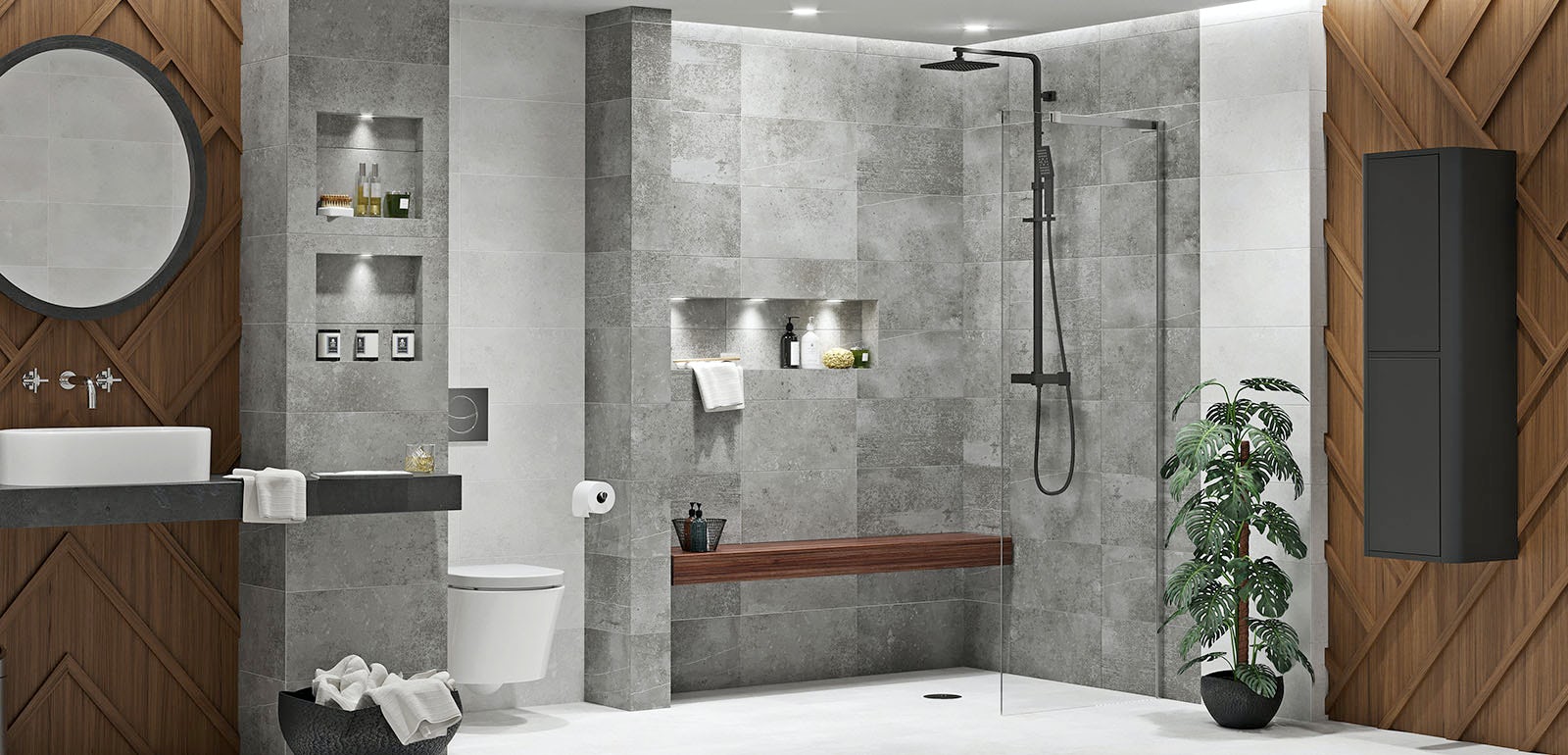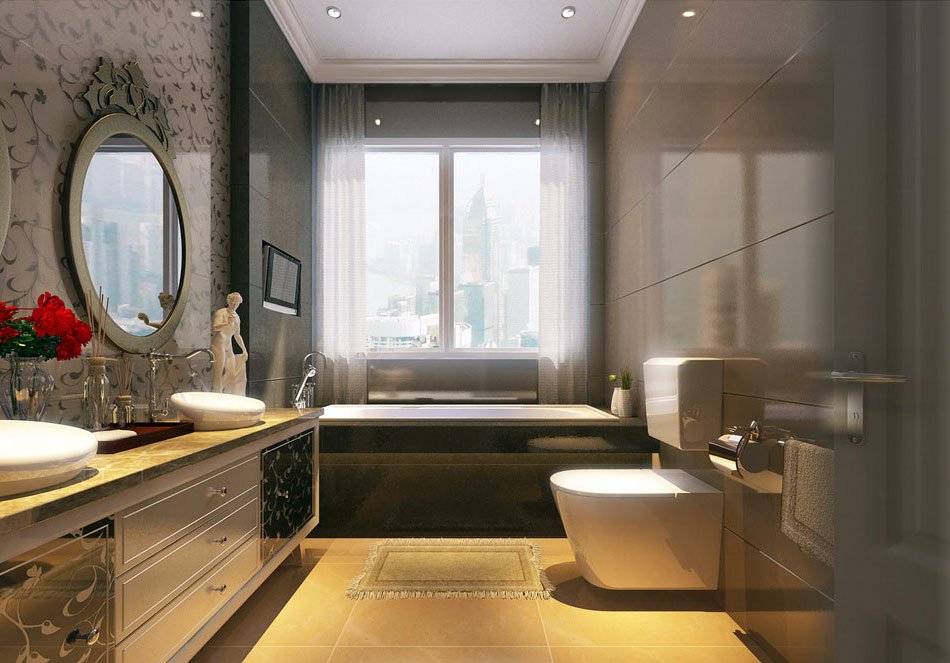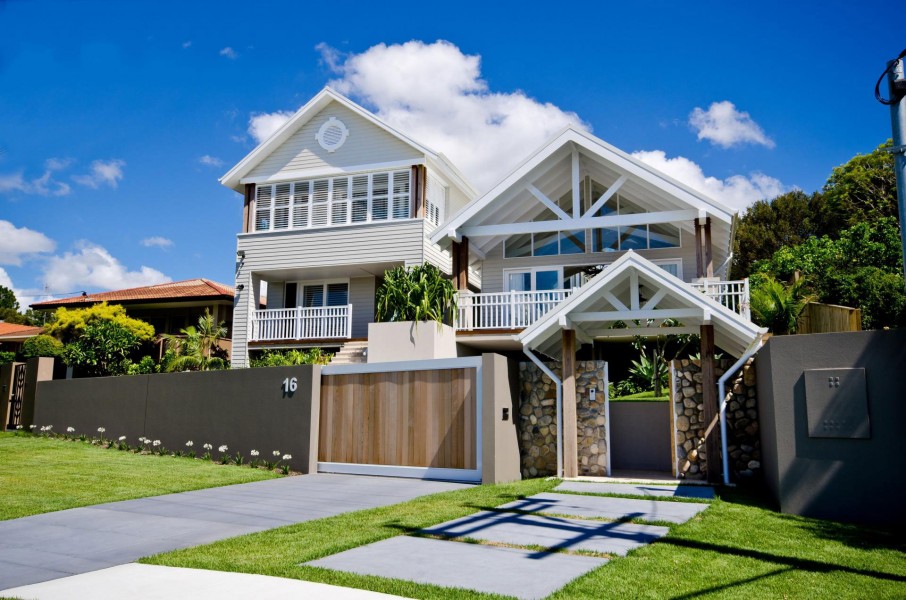If you’re looking for a way to make your home more appealing and more functional, a wetroom is an excellent option. Wetrooms can reduce the need for cleaning and maintenance, which make them highly appealing to many buyers. They can also give a home a sleek, stylish, and contemporary look. According to one recent report, more than 5% of homes in the UK now have wetrooms. After seeing this data, we decided to take a closer look at wetrooms and their increased popularity.
About Wetrooms
Bathrooms can get wet, and wetrooms are designed with that in mind. These spaces don’t utilize the standard shower tray. Instead, they have waterproof tiled floor and PVC ceiling panels. When a bathroom is waterproofed in this way, it’s often described as being tanked. When a bathroom has been fully tanked, shower doors, glass screens, and other features aren’t necessary. The room is capable of functioning as a shower enclosure. The floor is gently sloped, and a shower drain is placed within the floors. With that said, some wetrooms do feature shower panels so that water isn’t splashed across the space.
Ultimately, a wetroom is a type of bathroom that’s sealed and protected against water damage. It’s a modern solution that’s both highly convenient and very appealing.
Is A Wetroom Right For Your Home?
Wetrooms can offer all kinds of benefits to homeowners. If you focus on aesthetics alone, converting your bathroom into a wetroom can be an excellent way for you to give the space a more modern look and feel. Many people also find it appealing to take a shower in a wetroom. Getting water on the floor is no longer a concern. Furthermore, since there’s no need for an enclosure, there’s more space to move around.
The Benefits of a Wetroom
It’s a More Efficient Use of Space: If a bathroom is cramped, converting it into a wetroom can be an excellent way to get the additional space you need. Since there will no longer be a need for fittings and fixtures that take up a lot of room, your bathroom will feel much more spacious.
Cleaning Is Simple: Thanks to the lack of fixtures and fittings, cleaning a wetroom is a fast and easy process. Dirt and grime tends to build up on shower enclosures, and getting rid of that mess can take quite a bit of time. When you have a wetroom, there will be far less that needs cleaning. In many cases, the only thing you’ll need to clean are the floors and walls. If you opt for a floating basin and a wall-hung toilet, your bathroom won’t have any obstacles on its floor. The space will be clutter free, and that means cleaning will be far less of a headache.
It’s a Safer Solution: As people grow older, having easy access to bathroom facilities becomes more important. Since non-slip flooring is installed, and since there is no shower tray to worry about, wetrooms are an excellent option for anyone in a wheelchair and for those with disabilities. They can also be excellent for children.
Visual Appeal: Even though this style of bathroom is highly practical, it also has plenty of aesthetic appeal. Wetroom designs feel modern and sophisticated. Features like wall to ceiling tiling and minimal fixtures can make this space feel far more elegant. The open design can also make a bathroom feel more spacious and luxurious.
An Improvement In Resilience: Bathrooms are typically prone to water damage. However, because wetrooms are waterproof, this type of damage is far less likely. A wetroom will need less maintenance than a traditional bathroom will. A space can look brand new for years. Over time, this can lead to savings for you. It can also save you from the hassle of having to deal with bathroom repairs.
Increased Home Value: Converting a bathroom to a wetroom can increase the worth of your home, and it can also add value by improving your quality of life. Since you’ll be spending less time on maintenance and cleaning, you’ll have more time left over for other tasks and responsibilities. If you’re planning on selling your property in the near future, a wetroom could boost the value of your property, and it could also be a draw for potential buyers.
A Simple Installation Process: While the process of a wetroom is very different from the process of installing a standard bathroom, it isn’t overly complex. With that stated, for a smoother experience and the best results, you should hire a professional installer that has experience with wetrooms.
Other Factors to Take Into Consideration
Tanking and Drainage
In order for a wetroom to function properly, it must be waterproofed. The draining system also needs to be efficient and suitable for the space. If there are issues with either of these things, your wetroom could have issues with water damage or even leakage, which could lead to expensive repair bills for you. In most cases, wetrooms are waterproofed by installing a tanking membrane that’s fully sealed beneath the floors and walls. There are a number of options available from tanking, ranking from waterproofing kits that are intended to be painted on to rolls of tanking that can be installed. It’s necessary for the floor to have a slight gradient so that water that leaves the sink or the shower areas can be directed toward the drains.
Appropriate Ventilation
All bathrooms must have appropriate ventilation. This allows air to circulate freely and can keep mould from growing. Wetrooms may be waterproofed, but proper ventilation is still very important. There are a number of ways to achieve this. It’s possible to put in an extractor fan that can get rid of moisture in the space. Opening up a window can also give a bathroom a chance to ventilate.
Tiles: Since a wetroom can be covered in water, it’s crucial that tiles installed in the space are slip resistant. This is the best way to prevent slips, falls, and other types of accidents. The best option for these spaces are mosaic tiles or tiles made from natural stone. High gloss tiles are not suitable for this type of space.
Underfloor Heating: It isn’t necessary to have underfloor heating in a wetroom, but it is a feature that can enhance the space. Heating can easily be installed when the wetroom is being tanked and tiled. Once the system is installed, it can keep feet warm and comfortable even when it’s chilly outside. Additionally, underfloor heating allows the bathroom to dry more quickly, which can reduce the risk for mould and prevent additional cleaning.
The Cost of Wetrooms
Because wetrooms must be tanked, there are additional expenses to consider when estimating the cost of converting a bathroom into a wetroom. There are other factors that must be considered as well, such as the amount of tiling the space will require and how complex the fitting for the bathroom will be. In spite of these potential expenses, it’s possible to add a wetroom to a home even on a budget.
Although there’s the initial cost of investment to consider, wetroom installation can ultimately lead to savings. Maintenance costs are lower for bathroom, and the time you’ll save on cleaning has significant value. Best of all, you’ll be able to rest easy knowing that you don’t have to be concerned with bathroom leaks.




















